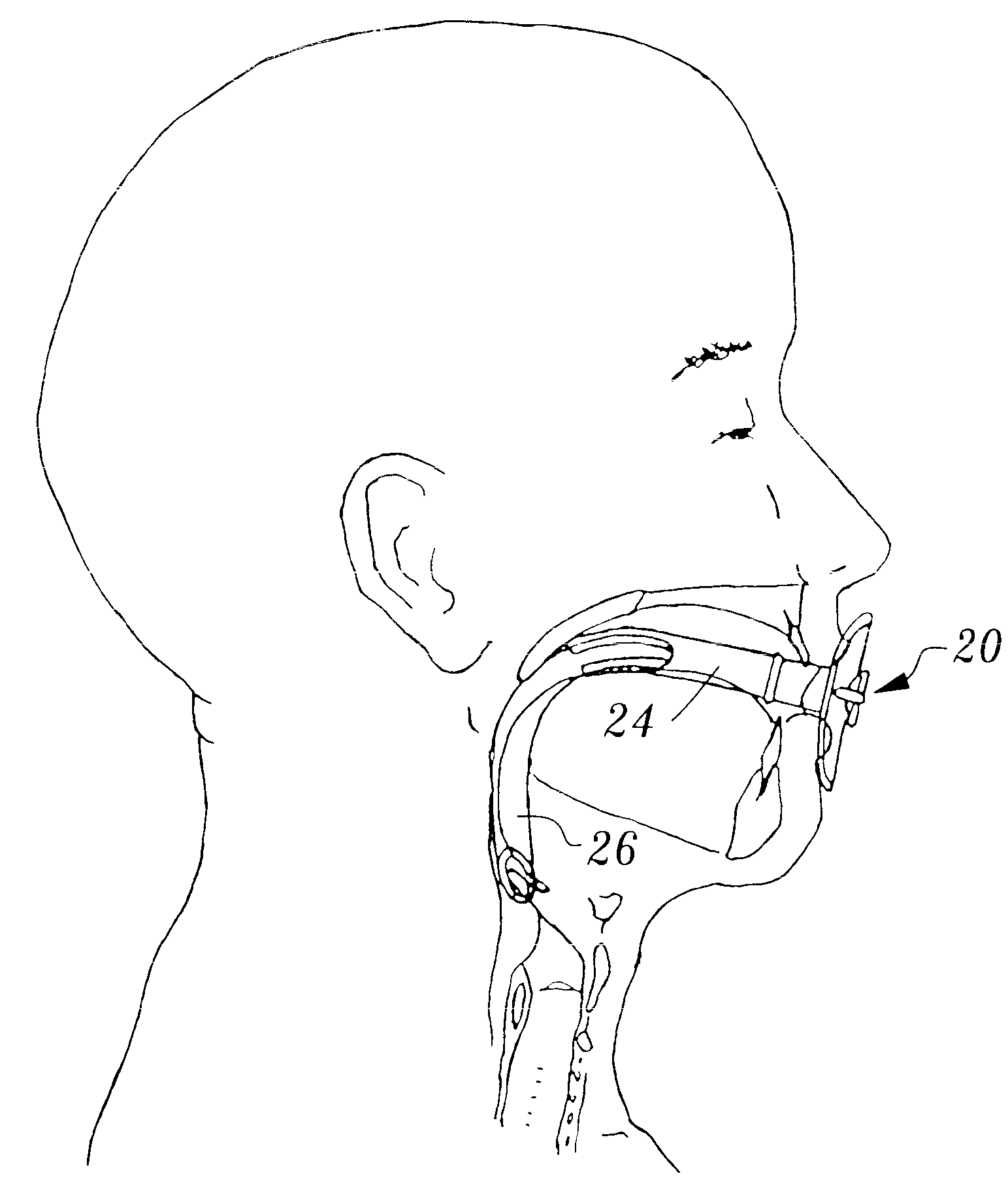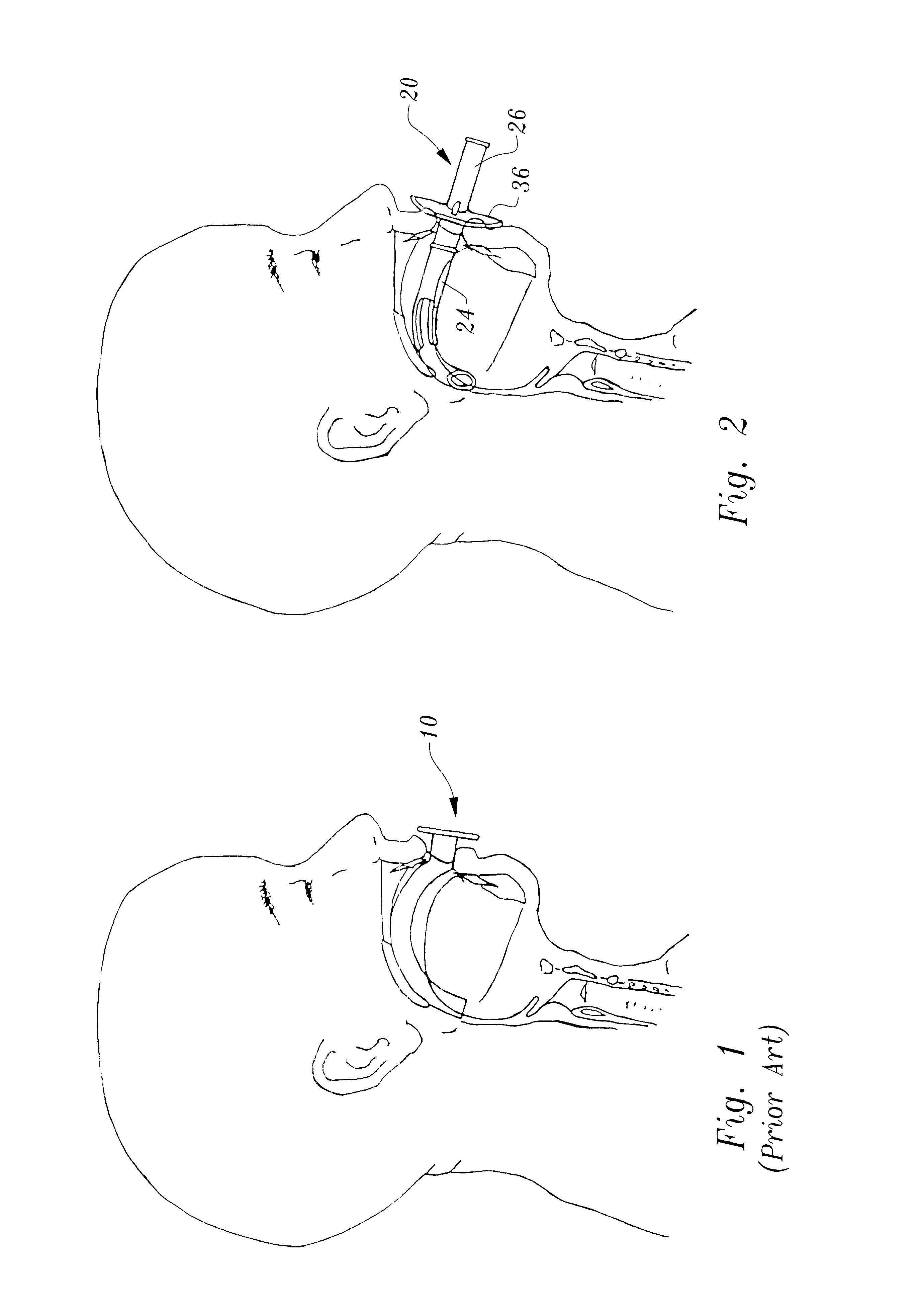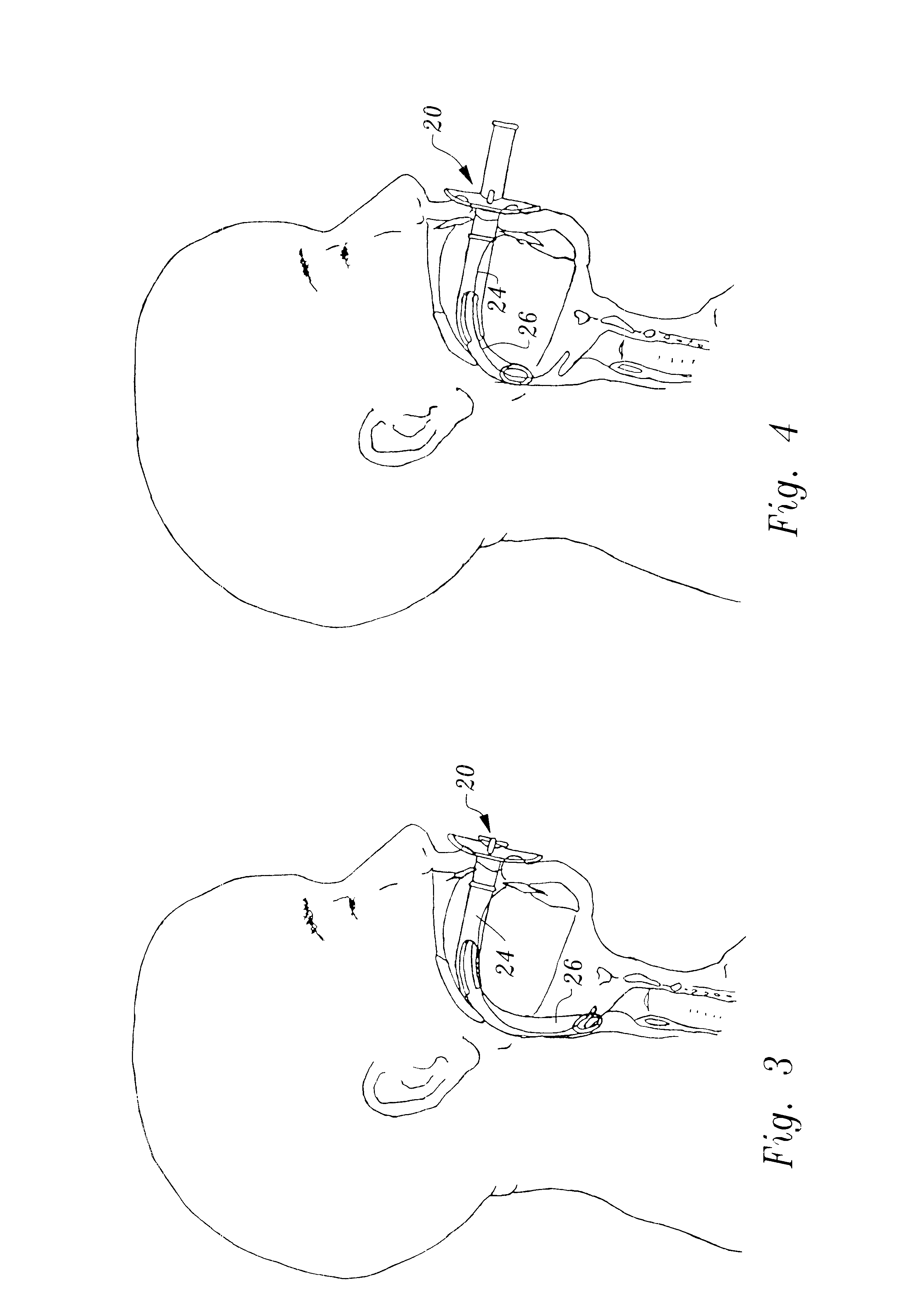Adjustable oropharyngeal airway apparatus
an oropharyngeal airway and adjustable technology, applied in respiratory devices, trachea tubes, life-saving devices, etc., can solve the problems of irritating the patient's rigid oropharyngeal airway, unable to move the tongue mass forward, and obstructed air passages, so as to reduce the likelihood of gagging reflex in the individual
- Summary
- Abstract
- Description
- Claims
- Application Information
AI Technical Summary
Benefits of technology
Problems solved by technology
Method used
Image
Examples
Embodiment Construction
Referring now to FIG. 1, an airway 10 of typical and conventional prior art construction is illustrated. The airway is located in a patient with an excessive hypopharyngeal tongue mass. It will be seen that even with the prior art airway 10 in place, the air passage to the glottis remains obstructed.
Referring now to FIGS. 2-14, adjustable oropharyngeal apparatus constructed in accordance with the teachings of the present invention is illustrated, such apparatus being generally designated by reference numeral 20. Airway apparatus 20 includes two airway portions--a first airway portion comprising a rigid mouthpiece 24 formed of molded plastic or the like and a flexible second airway portion 26 which may also be formed of plastic material but a plastic material that is flexible, soft, yieldable and resilient. A suitable rigid portion material is polyethylene and a suitable material employed in the construction of flexible portion 26 is polyvinyl chloride; however, it is to be understoo...
PUM
 Login to View More
Login to View More Abstract
Description
Claims
Application Information
 Login to View More
Login to View More - R&D
- Intellectual Property
- Life Sciences
- Materials
- Tech Scout
- Unparalleled Data Quality
- Higher Quality Content
- 60% Fewer Hallucinations
Browse by: Latest US Patents, China's latest patents, Technical Efficacy Thesaurus, Application Domain, Technology Topic, Popular Technical Reports.
© 2025 PatSnap. All rights reserved.Legal|Privacy policy|Modern Slavery Act Transparency Statement|Sitemap|About US| Contact US: help@patsnap.com



